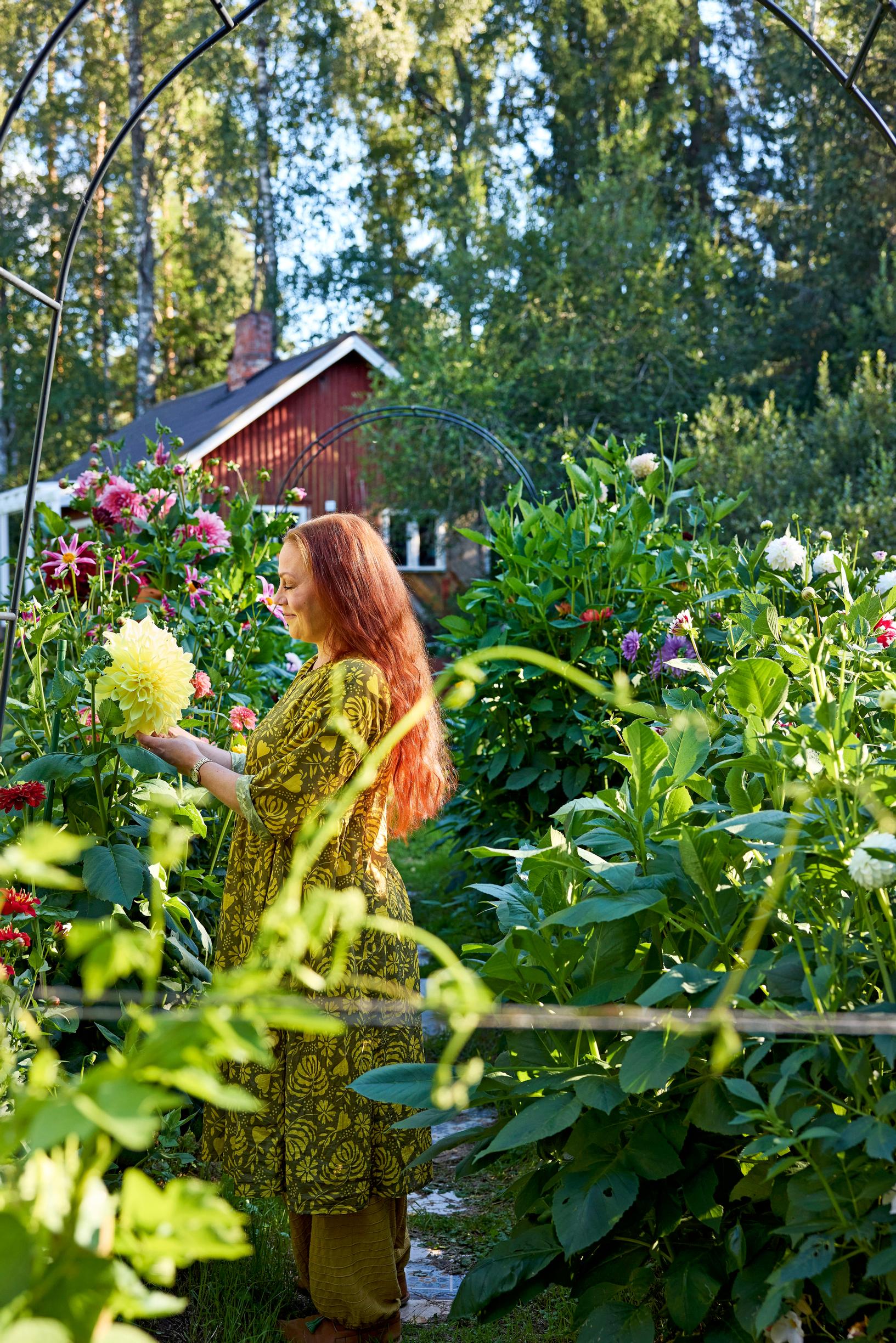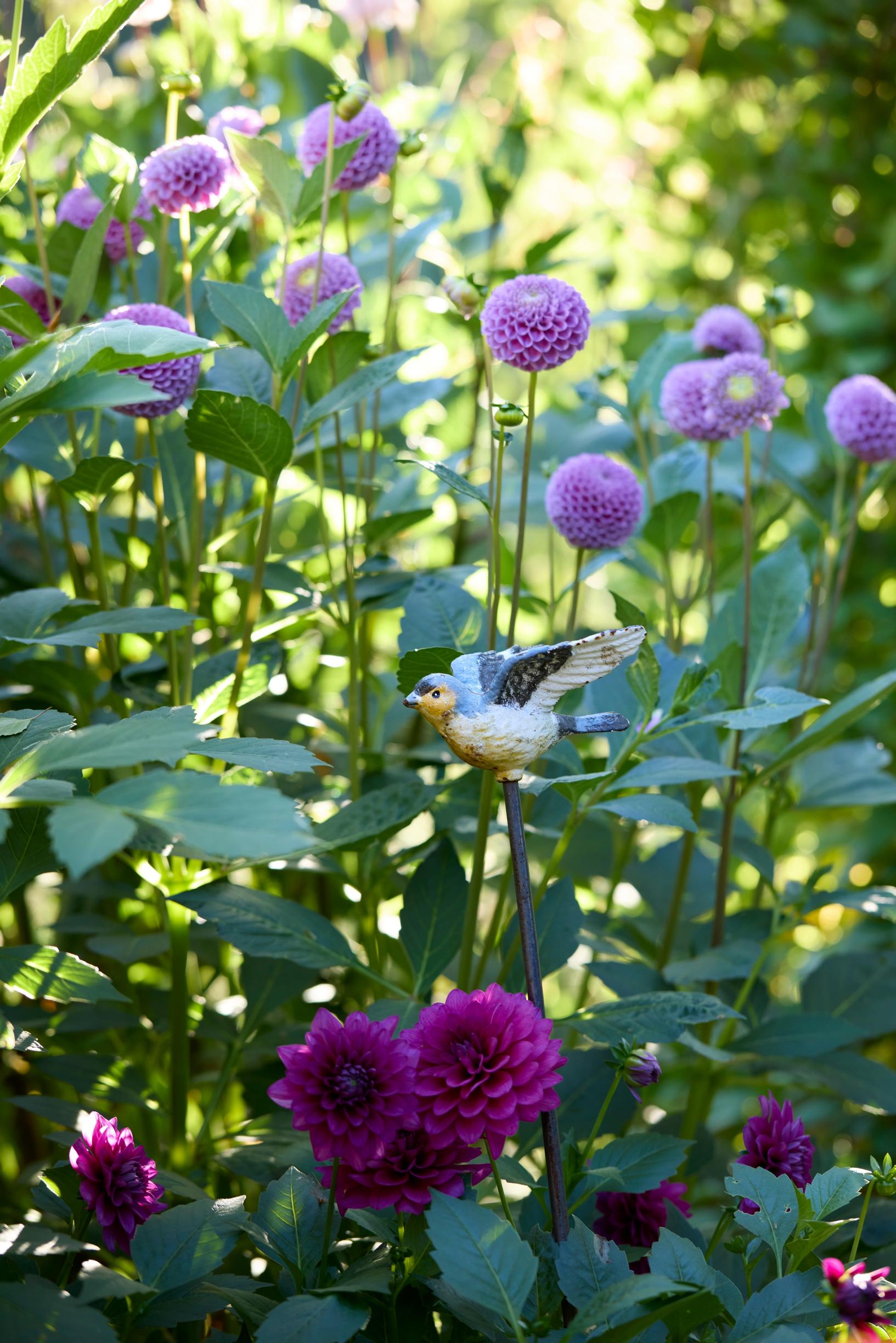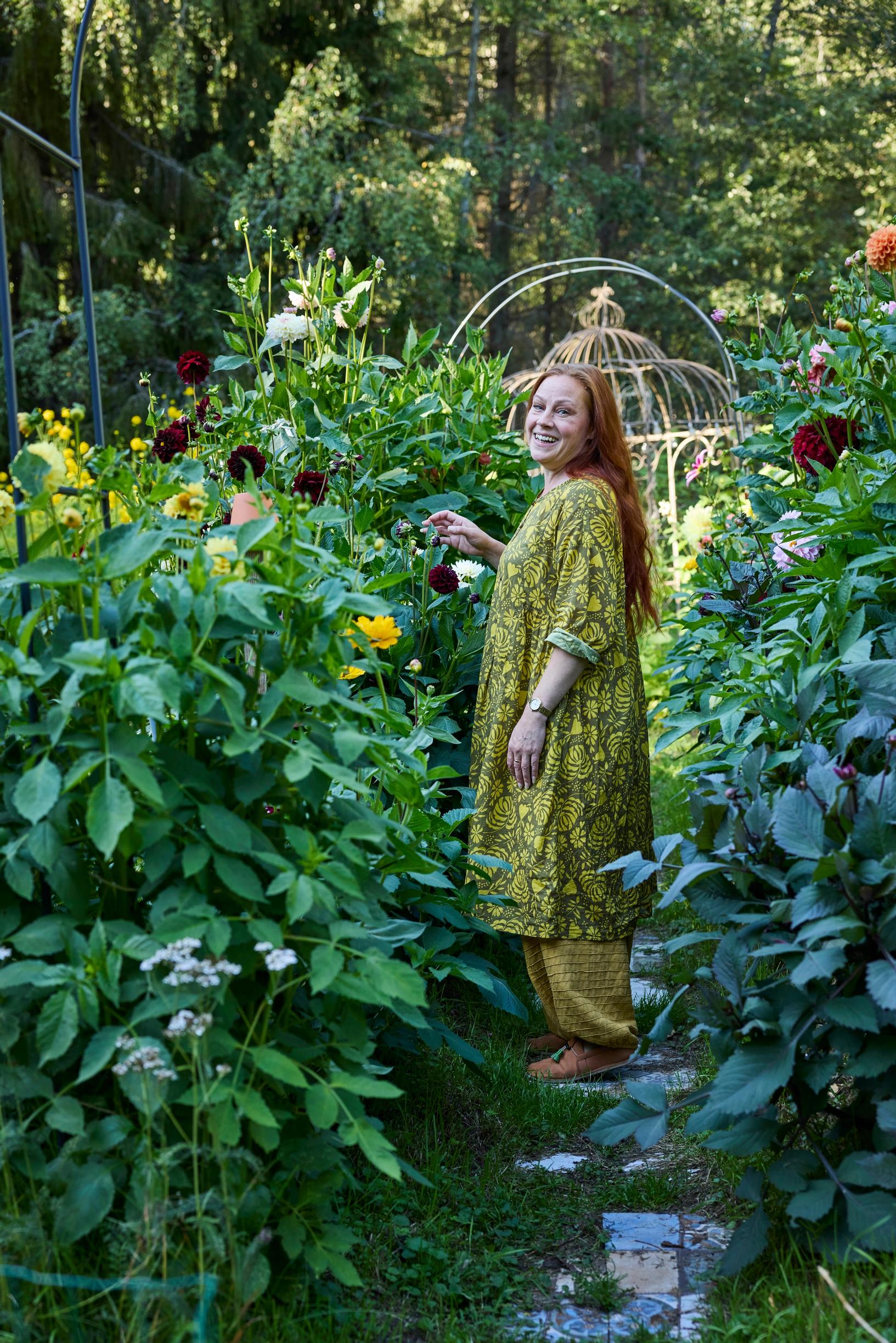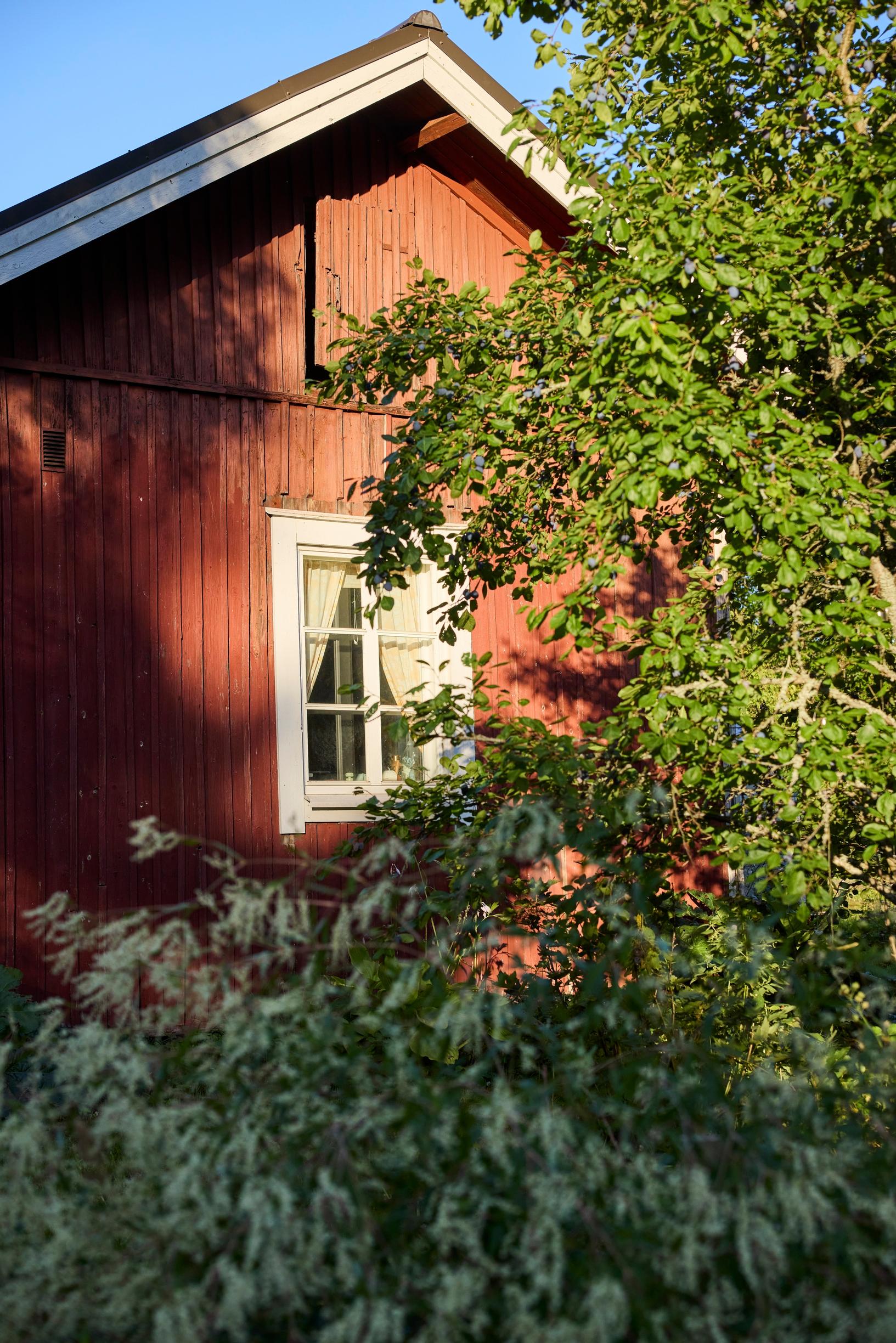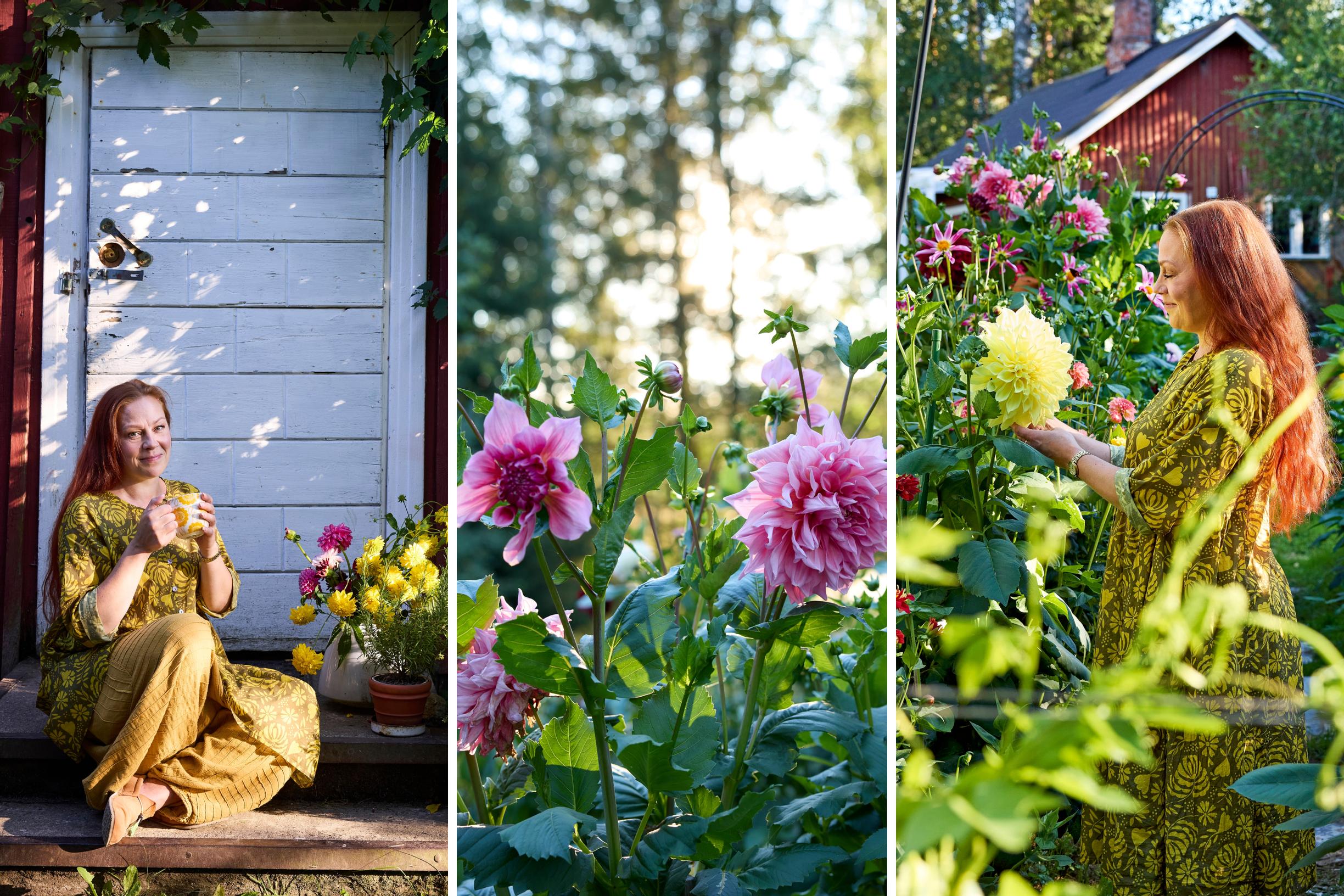
Where even the lawn blooms: “I could gaze at these plants forever”
Lush dahlias, old perennials, and pollinator-friendly plants thrive in the yard of Finnish Pia Reijola’s second home. A natural approach to gardening and flower-filled lawns perfectly complements the atmosphere of her 1920s house.

Playful, sprawling, and bohemian. That’s how Espoo-based Pia Reijola describes the garden of her second home.
“I’ve tried to create areas in the yard that feel magical, as though they’re removed from reality,” she says.
Some of the yard’s most striking flowers are dahlias, which can reach nearly two meters (6.5 ft) tall.
“Dahlias look almost unreal—they’re delicate and incredibly beautiful!”
Pia’s enthusiasm for dahlias ignited when she came to Karkkila to see the red-painted cottage before buying it. A few dahlias were blooming in the yard, and Pia fell head over heels for them. Today, more than a hundred dahlia tubers open their buds in the garden.
“The larger the tuber grows, the more spectacularly it blooms,” Pia explains, adding that she keeps the tubers in her home’s cool storage space for the winter.
The hundred-year-old building at Hongisto Manor
Who Pia Reijola, a carpenter who works in bathroom project sales, plus a husband, five children, grandchildren, and three dogs.
Cottage Built in 1920, the farmhand’s cottage from Hongisto Manor, an old sauna, and a shed built a couple of years ago.
Where Karkkila, Finland.
Pompon dahlias grow in the upper yard near the house, while cactus dahlias and giant-flowered varieties thrive in the lower yard, where the soil is especially fertile and rich.
The atmosphere in this forest-surrounded yard is created by lush foliage, natural touches, trellises, and a romantic pergola brightened by golden glow flowers. Colorful marigolds, four o’clocks, and verbenas growing in upcycled containers also fit the style perfectly.
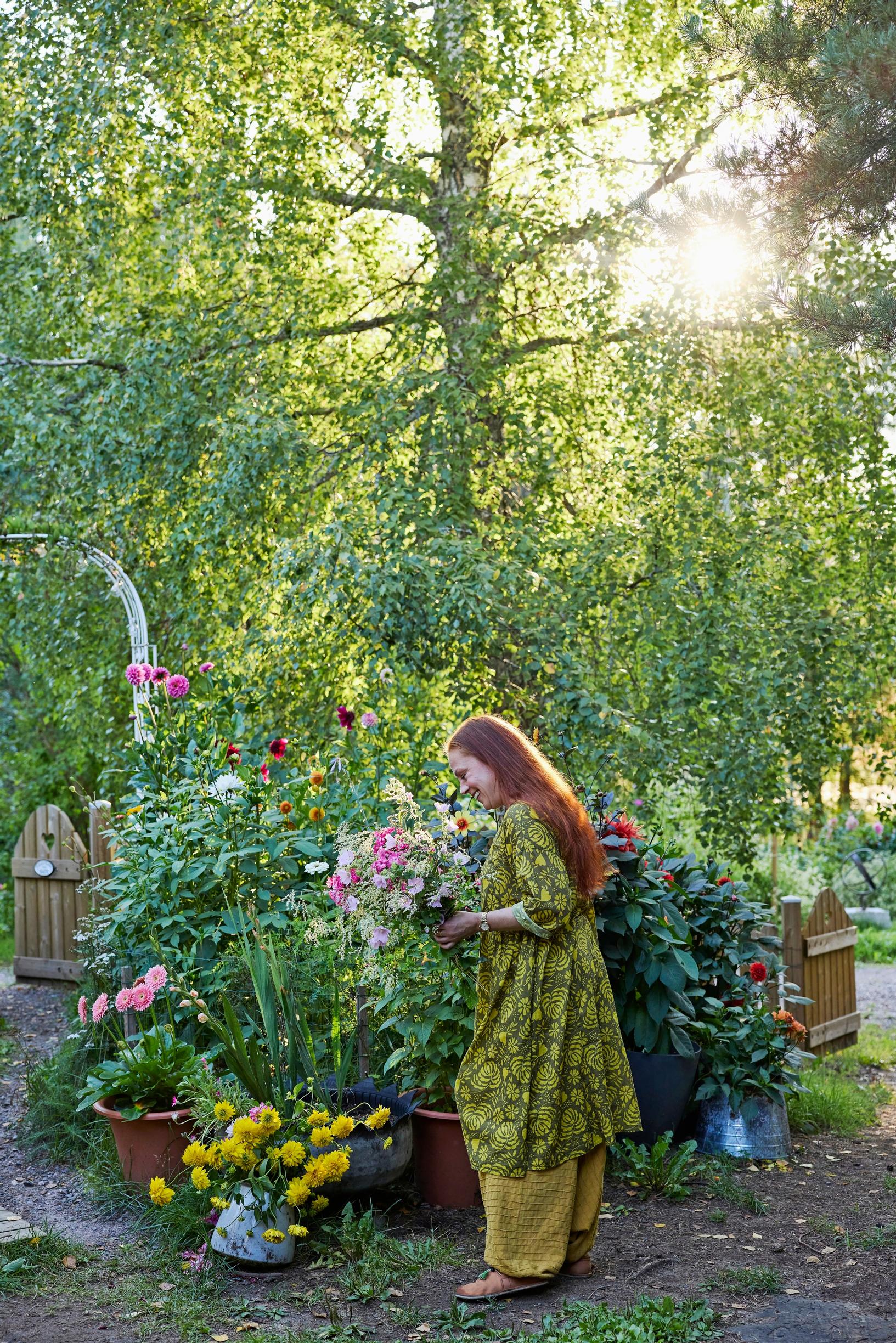
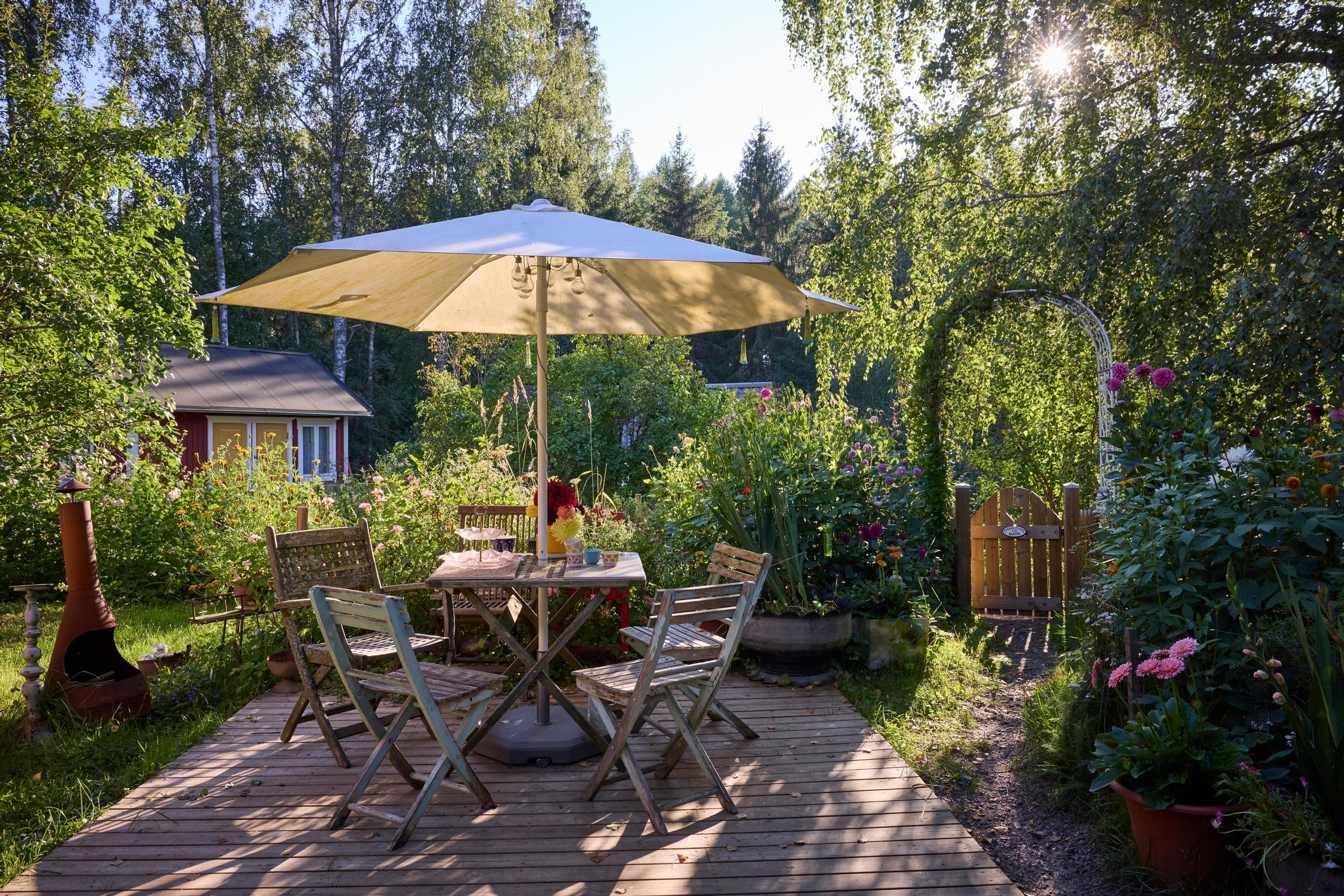
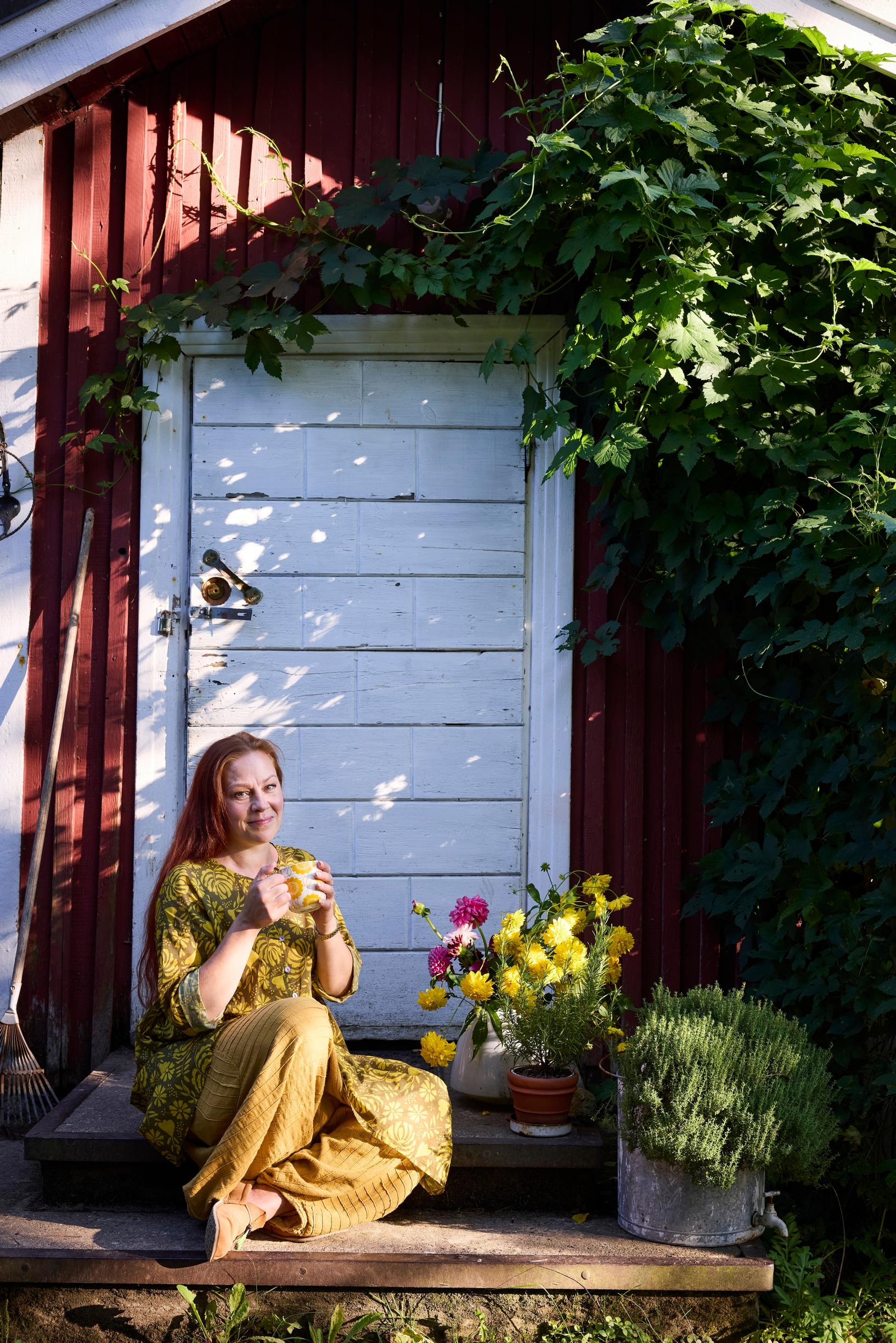
Over a hundred years ago, the cottage was originally built as a farmhand’s house for Hongisto Manor, serving as a residence until the 1970s. There was also once a garden on the grounds where flowers and vegetables were grown for market.
The yard still has long-established plants like hops, dozens of currant bushes, damsons, and rhubarb. Many perennials, such as golden glow, phlox, mallow, and giant fleeceflower, also delight Pia, thanks to previous owners.
At the lower part of the hillside property, tucked into the forest, shimmers a small pond. It was dredged long ago for swimming, but over time it’s been allowed to return to its natural state. Pia uses the pond’s water for irrigation and watches wildlife coming to drink via a game camera.
“It’s wonderful to see lynxes, deer, and roe deer wading in the pond,” she says.
The pond is also a key spot for Pia to relax. Being near the water, she can unwind by watching the plants and dragonflies dart about.
Observing insects has fascinated Pia since childhood. Even though she’s lived in the city her entire life, weekend cabin stays and vacations in nature have always been an important part of her life.
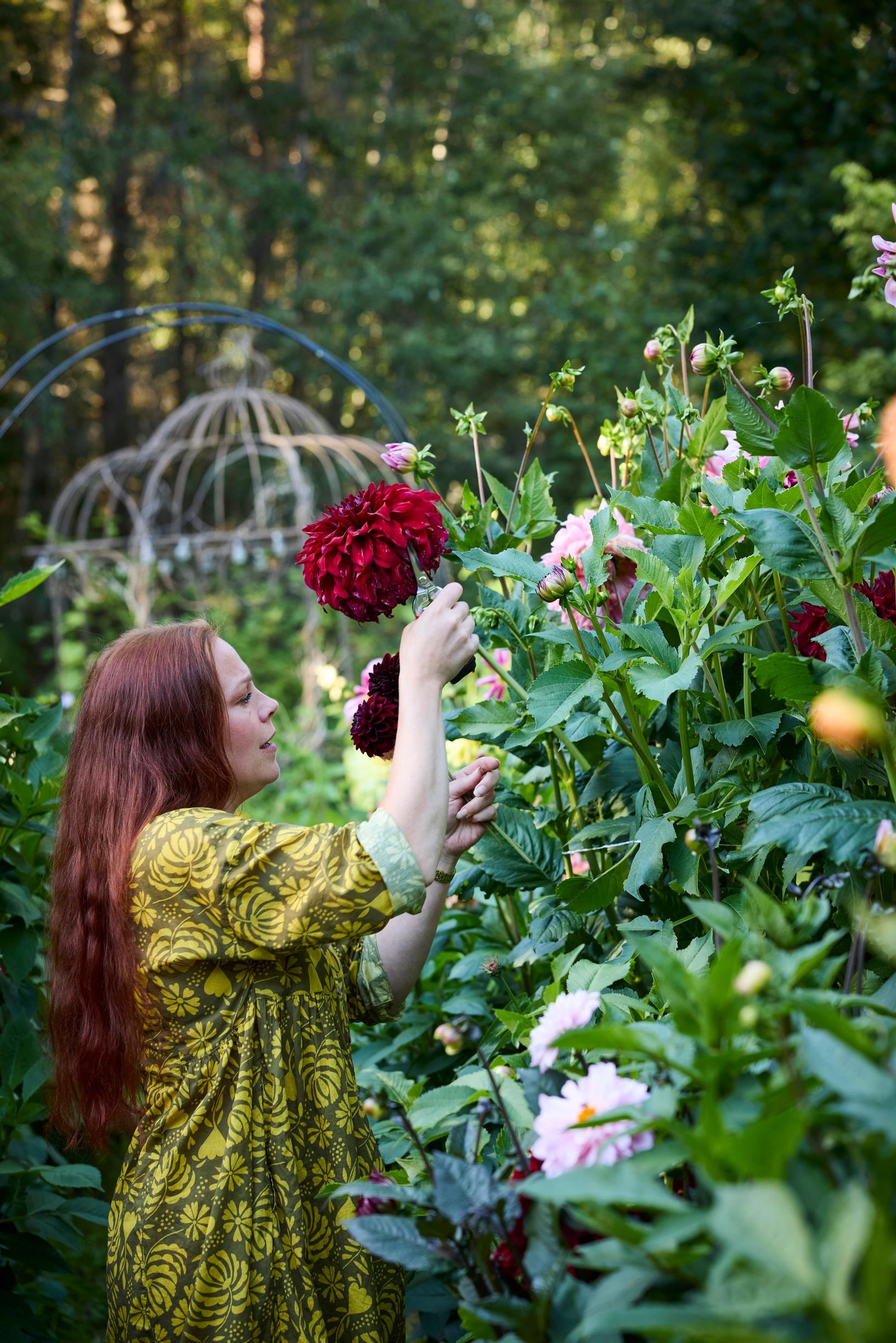
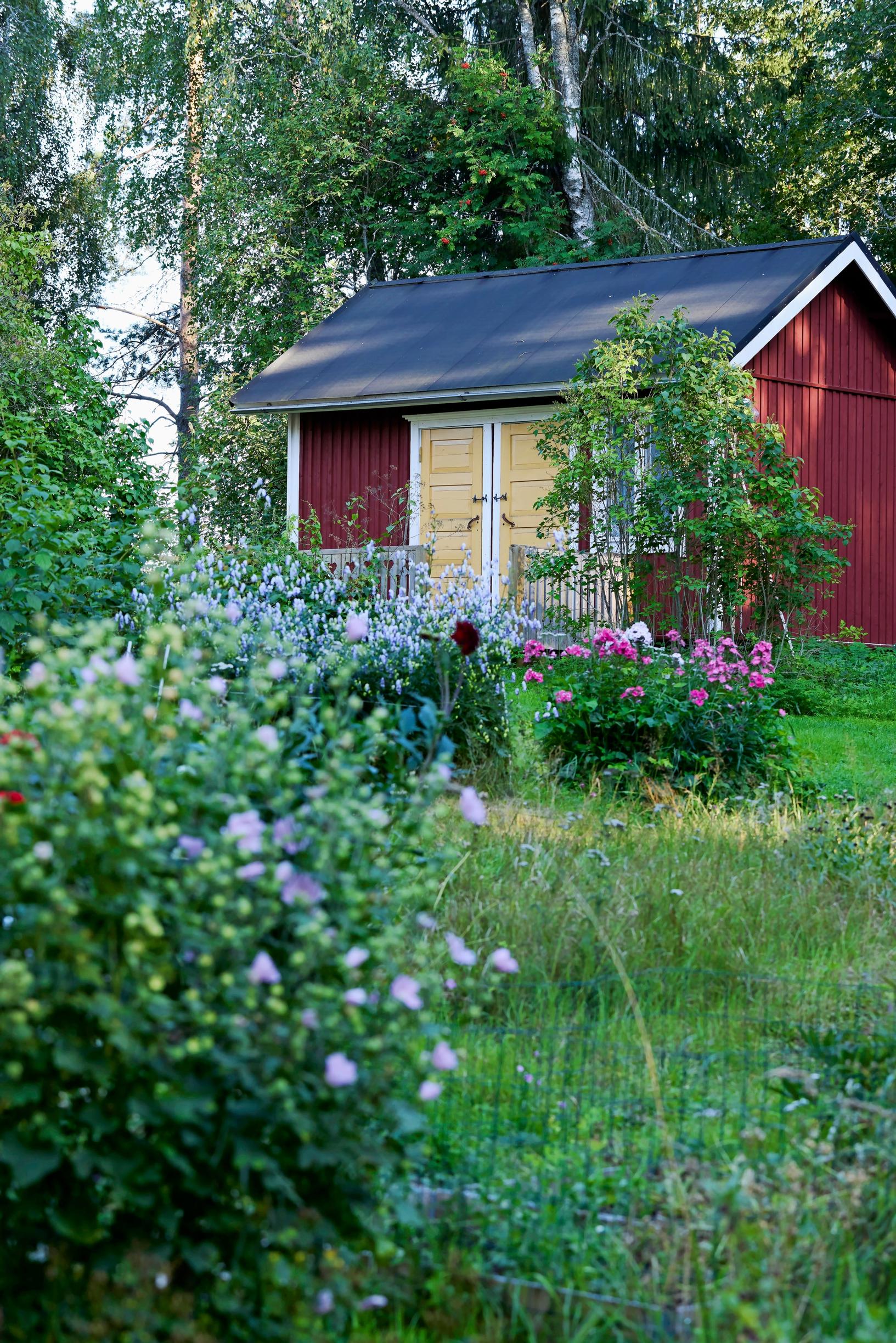
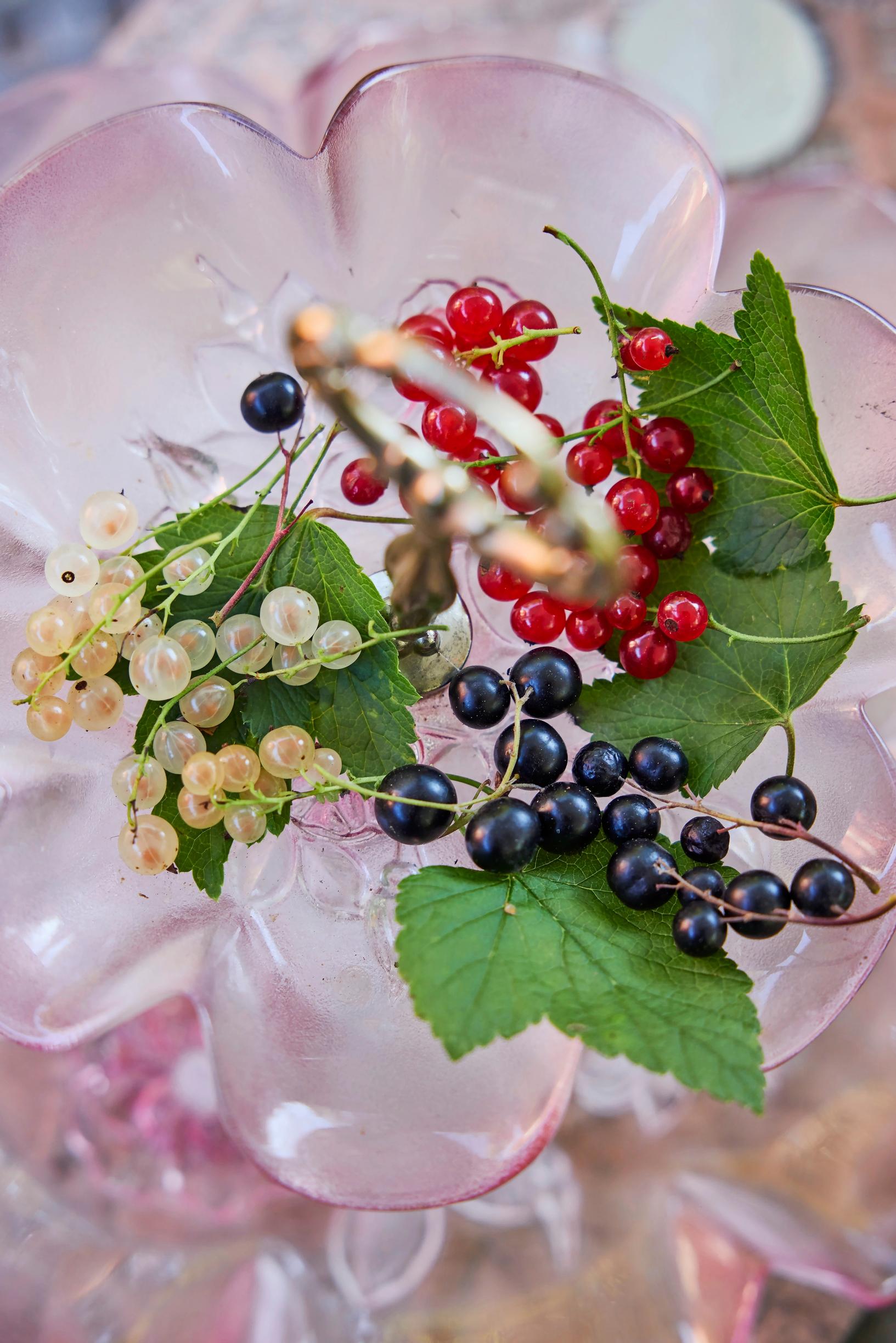
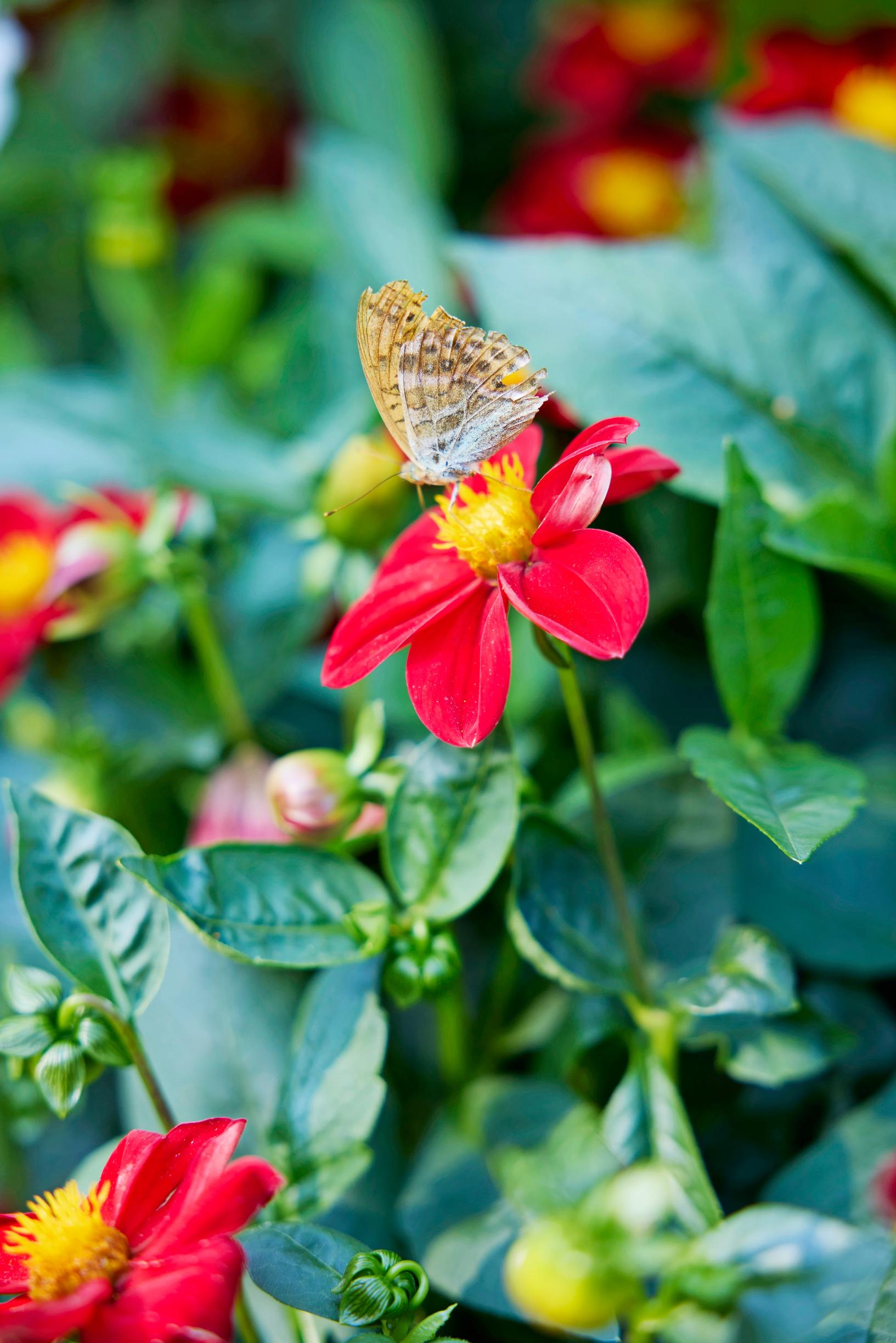
In her cottage yard, Pia nurtures plants that benefit insects, such as heritage perennials and wild plants like nettles and dandelions. This also lets her observe the life of flowers, bumblebees, and butterflies around the yard.
“There’s plenty of food for pollinators here from spring to fall. I’ve kept the willow thicket at the edge of the yard so that even early-season insects have nectar and pollen available.”
Insects are also drawn to the diverse lawn, where oxeye daisies, knapweed, and other meadow flowers are free to bloom and go to seed undisturbed. Later in the summer, the grass is mowed, but the flowering plants remain in patches here and there.
Among summer flowers, zinnia is an especially powerful insect magnet, as its vibrant blooms attract butterflies and other pollinators. The most impressive are the tall zinnias, which grow into multi-branched bushes about one meter (3 ft) tall over the course of the summer.
“Zinnias are unbelievably beautiful and absolutely reliable. I sow their seeds in mid-April so the seedlings have plenty of time to produce blooms.
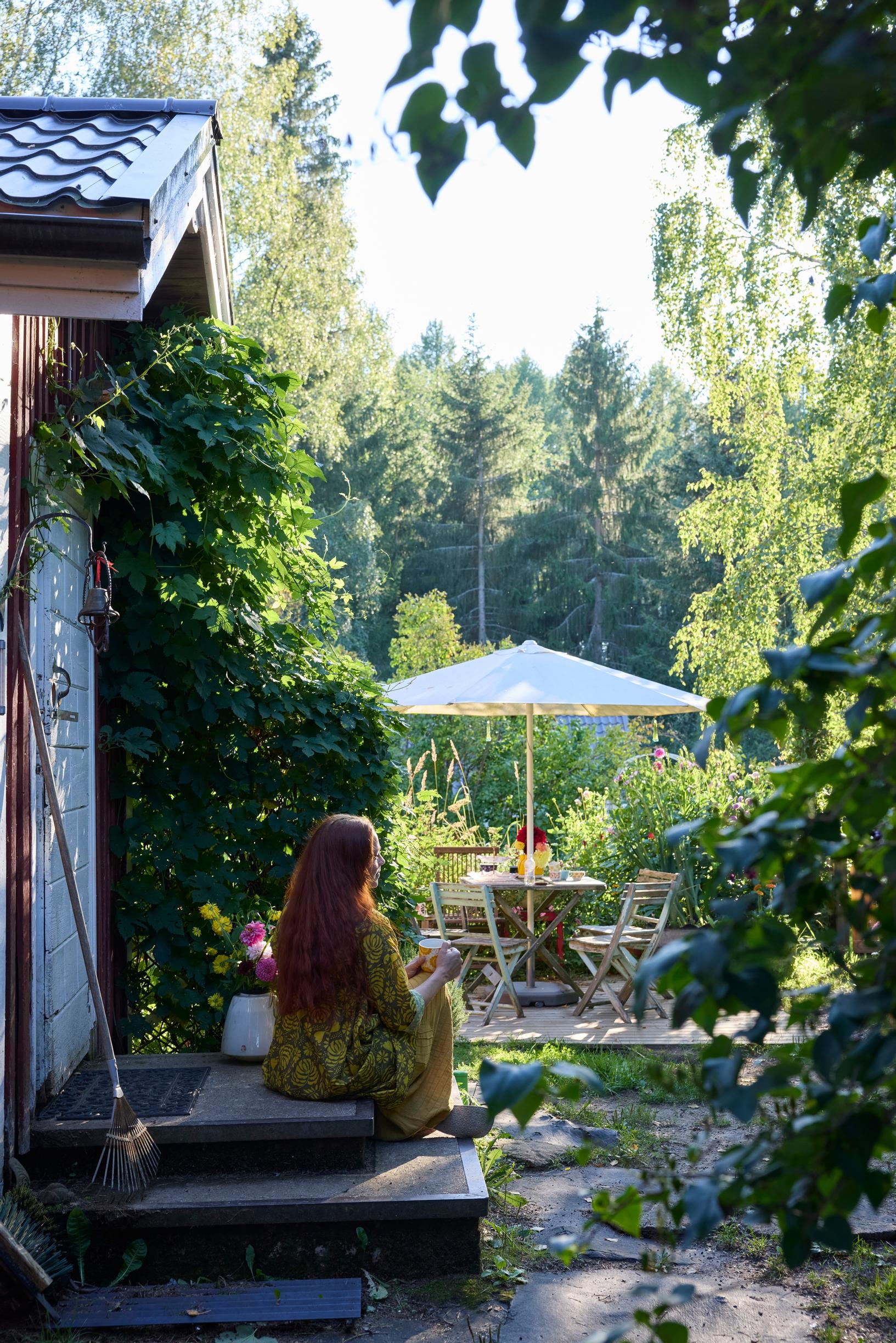
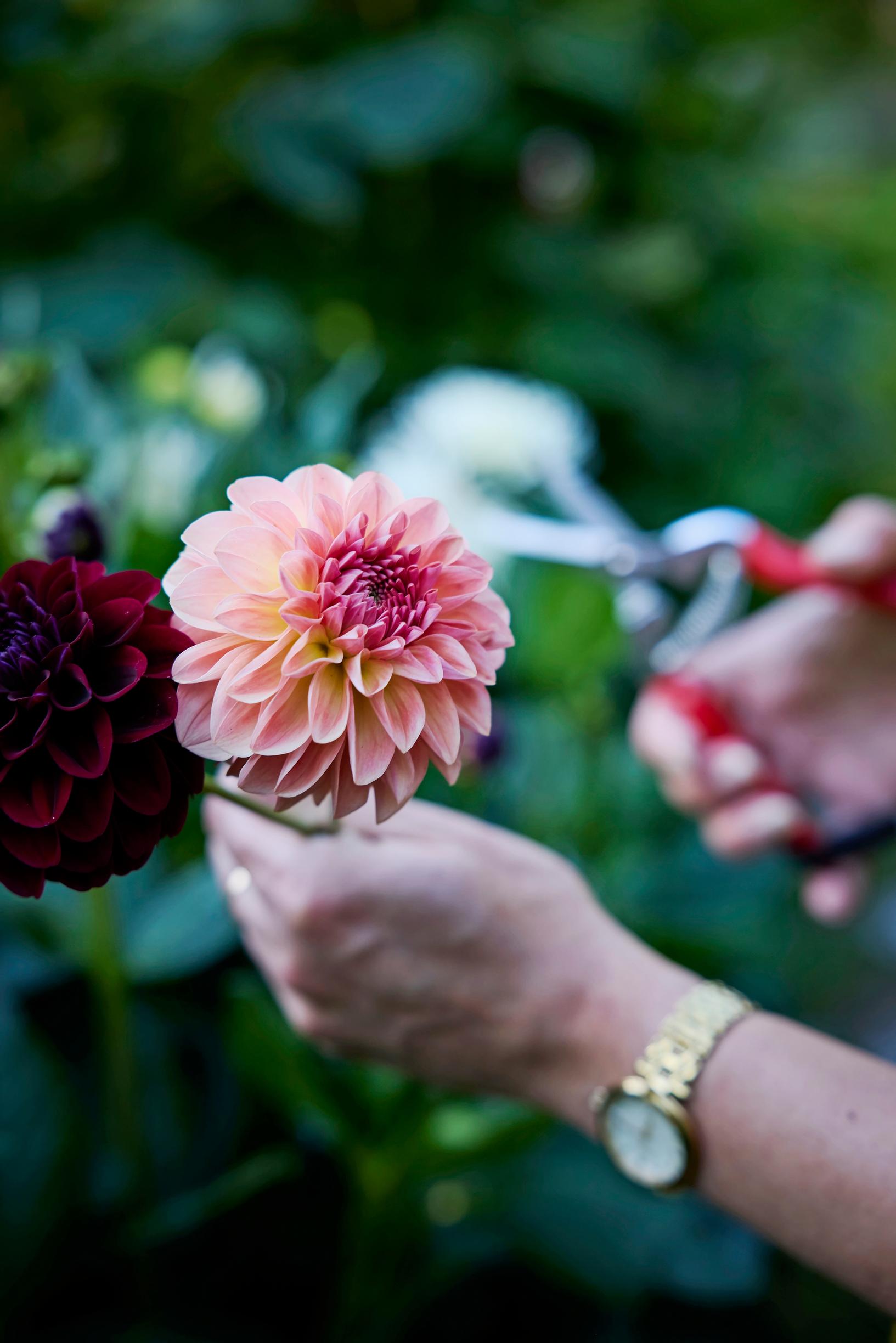
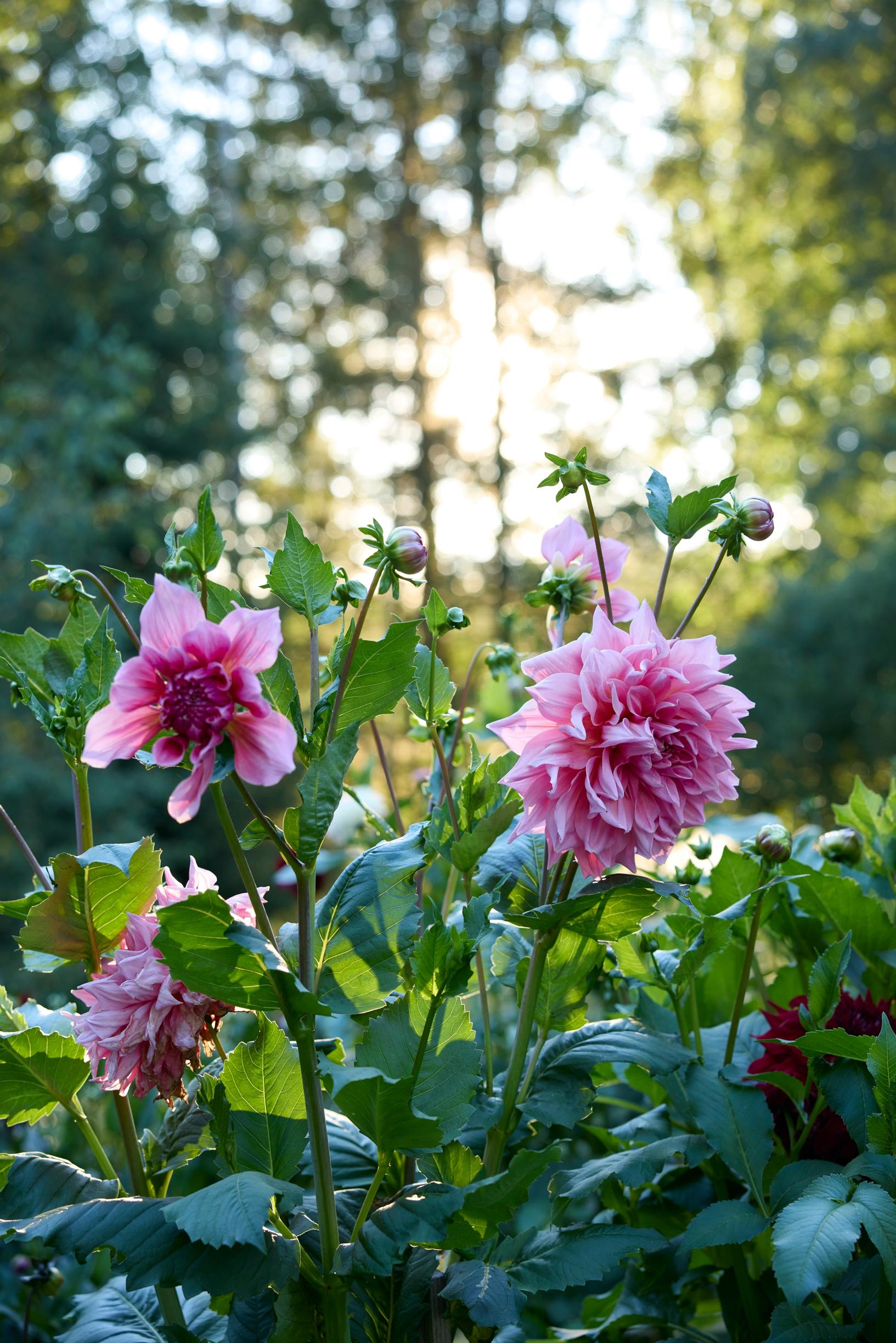
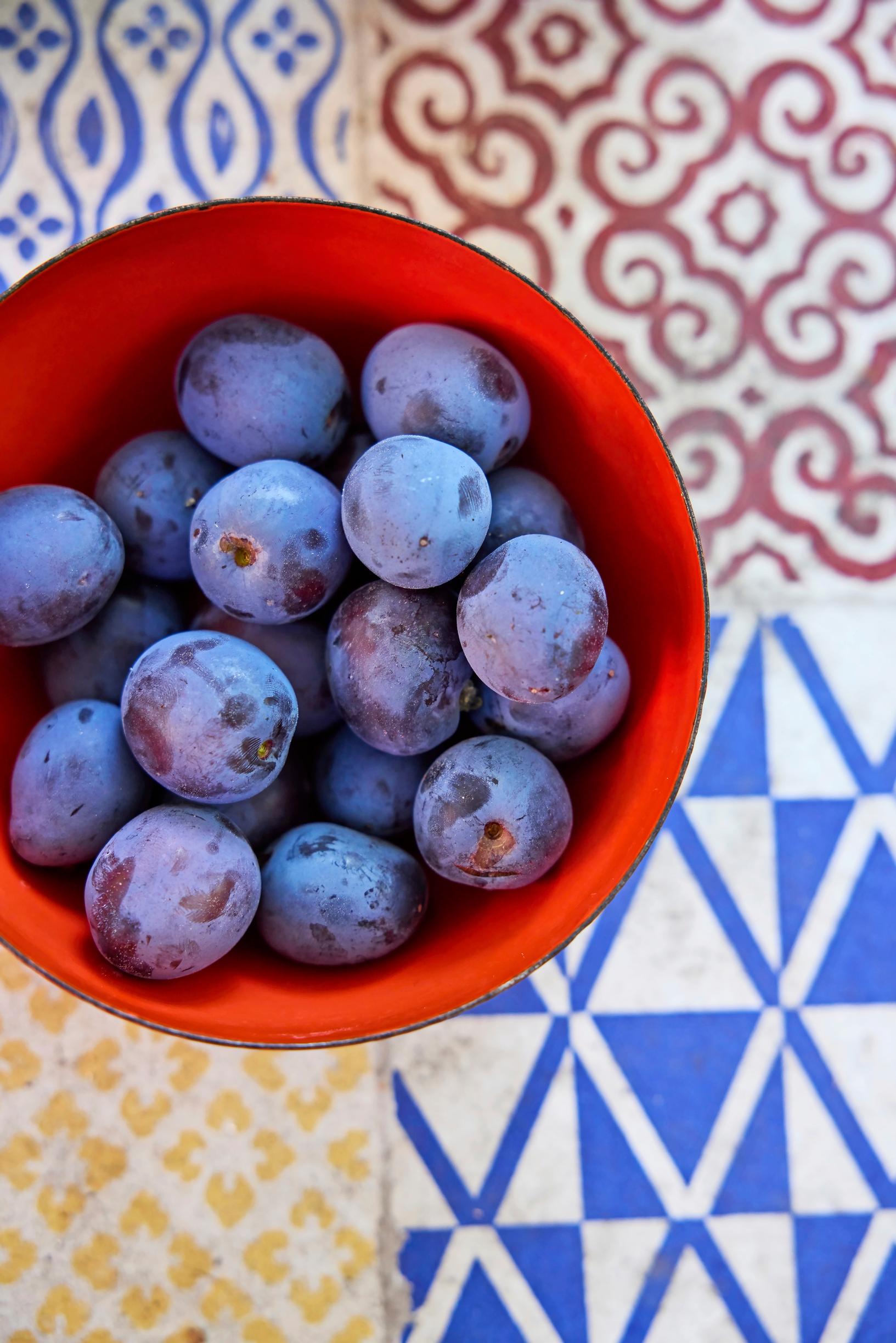
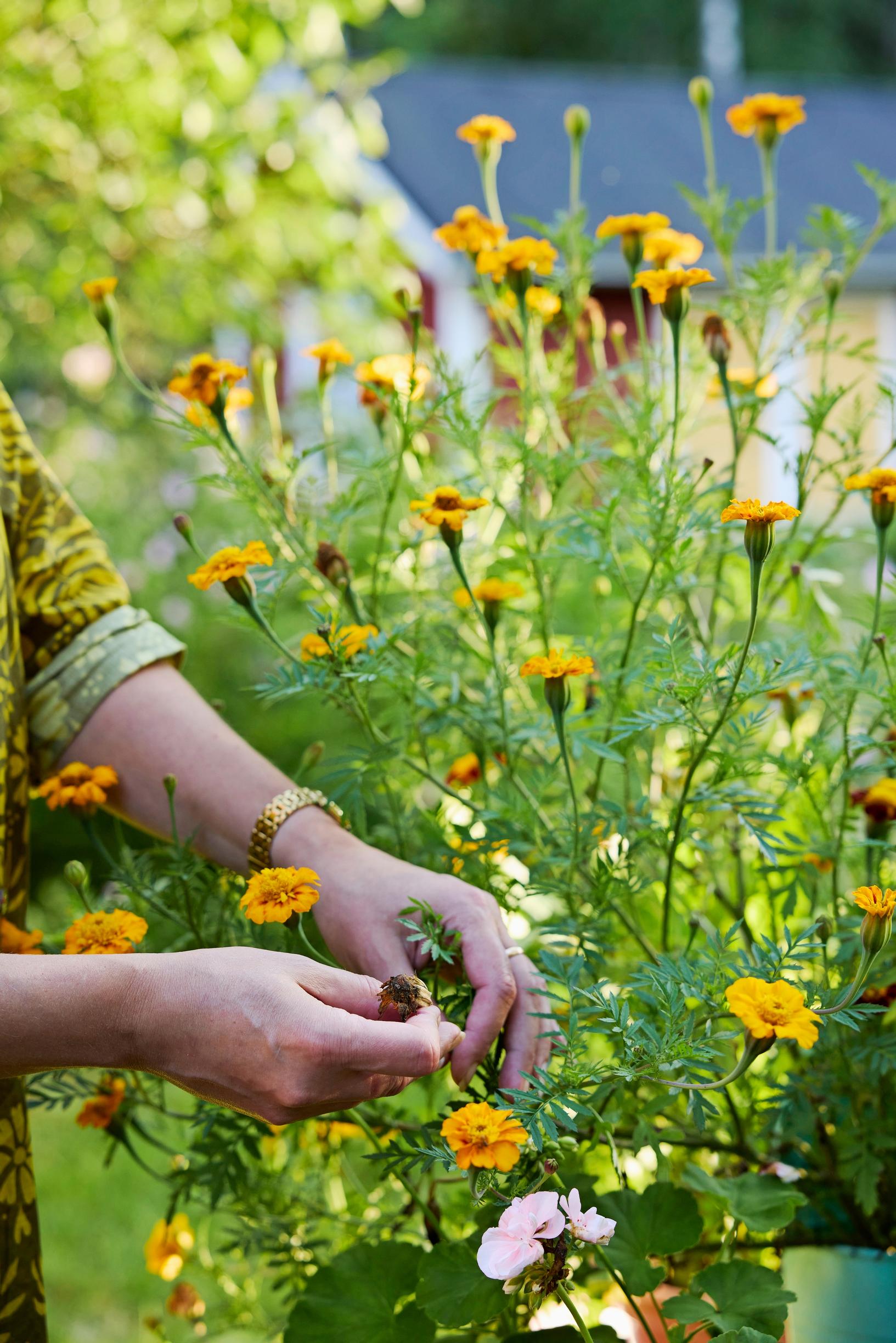
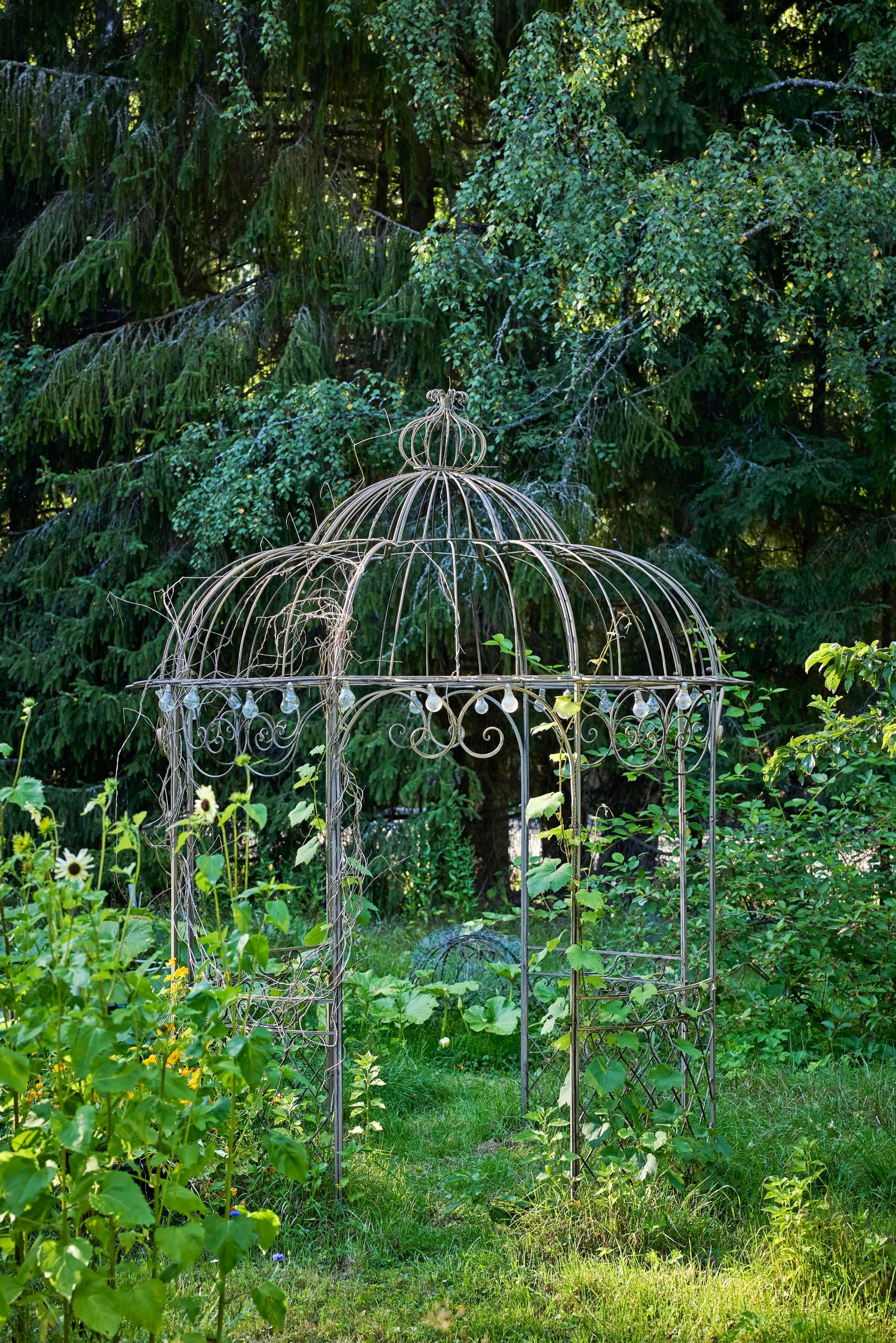
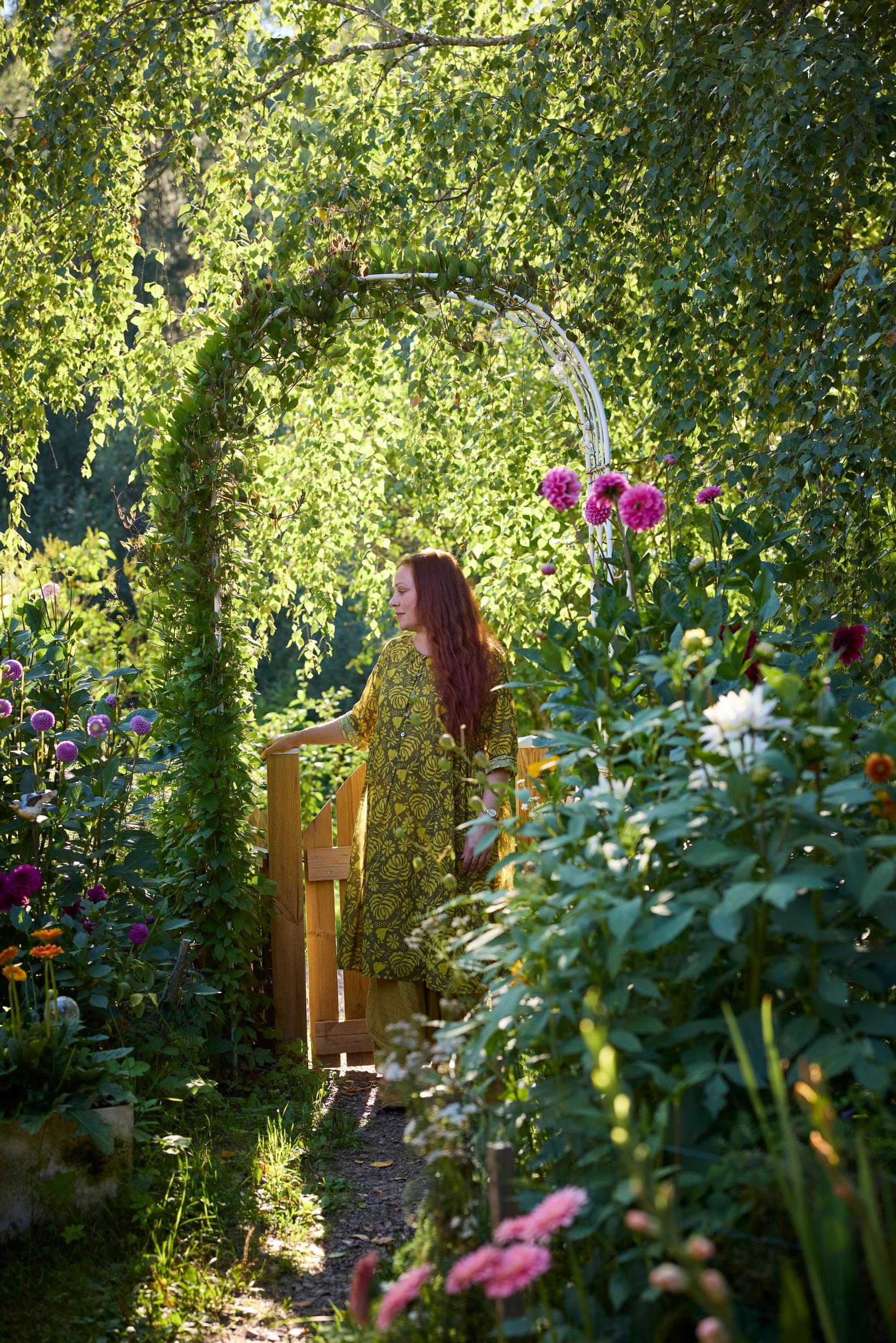
Because the drive to the cottage takes only 45 minutes, Pia can also spend time at her second home during the workweek.
“When I pull into the yard, I feel my blood pressure drop right away. The best thing here is the peace and room to breathe.”
Pia finds August most enchanting, when dahlias and zinnias glow in full brilliance. She spends hours in the garden on summer evenings, savoring the dusk and the shifting light. As night falls, the dahlia flowers seem even more magical.
“I could gaze at these plants forever. I never get tired of their beauty.”
